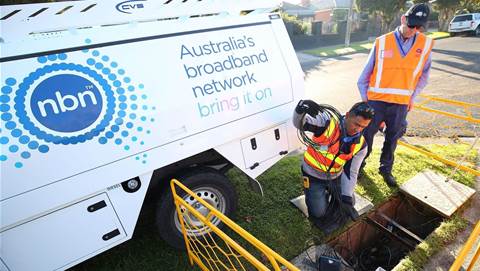For its full year results, Optus posted a growth in EBITDA of 3.5 percent while its operating revenue dropped 5.8 percent.

Optus points the decline in operating revenue to lower NBN migration payments, lower equipment sales and the cessation of leasing revenues. It’s operating expenses declined 8.4 percent compared to the prior year.
Total operating expenses fell 10 percent and Optus grew its EBITDA 0.5 percent in the second half.
The company’s EBIT rose by 32 percent to $249 million and mobile service revenue rose 6.9 percent year on year.
During the year Optus added 273,000 new mobile subscribers and delivered a strong uplift in mobile ARPU of 8.1 percent from higher access revenues and the increased penetration of the Optus Choice plans.
Optus grew free cashflow by 2.4 percent to $776 million, despite continued heavy investment, with capital expenditure rising 4.9 percent to $1.57 billion.
Optus Enterprise delivered its third consecutive year of EBITDA growth, during which it secured a range of strategic wins including launching a first of a kind network integrated Mobile Call Recording feature for Enterprise and unveiling the 5G Innovation Hub, a showcase facility for customer co-creation of 5G-enabled solutions in the heart of Sydney’s CBD.
Kelly Bayer Rosmarin, CEO at Optus said, “Optus has positive momentum after a tough couple of Covid-impacted years, with strong growth in underlying EBIT across our business.
“Product innovation and enhanced customer experience continue to be major Optus strategic differentiators and underpinned our ability to grow our mobile customer base and generate increased mobile ARPU.
“It’s been another big year for Optus. We continue to lead on 5G speed, we’ve launched eight Living Network features, announced our entry into the growing “Smart Spaces” market, launched our game-changing content aggregation platform SubHub and continued to heavily invest in the competitive critical infrastructure and services Australian communities need to survive and thrive.”
In the second half of the year ended 31 March 2022, Optus said it continued to make significant progress in delivering its strategy and gained market share in mobile. This solid performance was delivered despite continued challenging market conditions from ongoing COVID-19 disruptions, equipment shortages and slow recovery of international travel.
Excluding NBN migration revenue, operating revenue declined 6.1 percent primarily from lower equipment sales from the continued global supply shortages and the ongoing impact of lockdowns on retail stores.
Mobile service revenue grew 4.2 percent driven by higher postpaid revenue, as well as a full half year’s contribution from amaysim that was acquired in February 2021.
For the consumer business, home revenue (excluding NBN migration revenue) recorded growth of 4.5 percent, reversing from a decline in first half of the year. The increase was driven by double-digit increases in both NBN broadband and Fixed Wireless Access (“FWA”), offsetting declines from the legacy platforms.
NBN broadband ARPU grew from price changes implemented in the first half year and FWA revenue rose from continued growth in 5G.
Optus’ total mobile customer base grew 207,000 in the second half year. The strong improvement was led by on-going execution of Optus’ customer centric strategy and investments in Living Network innovation. Optus’ NBN customer base grew by 41,000 from a year ago.










 iTnews Executive Retreat - Security Leaders Edition
iTnews Executive Retreat - Security Leaders Edition












_(1).jpg&h=140&w=231&c=1&s=0)



